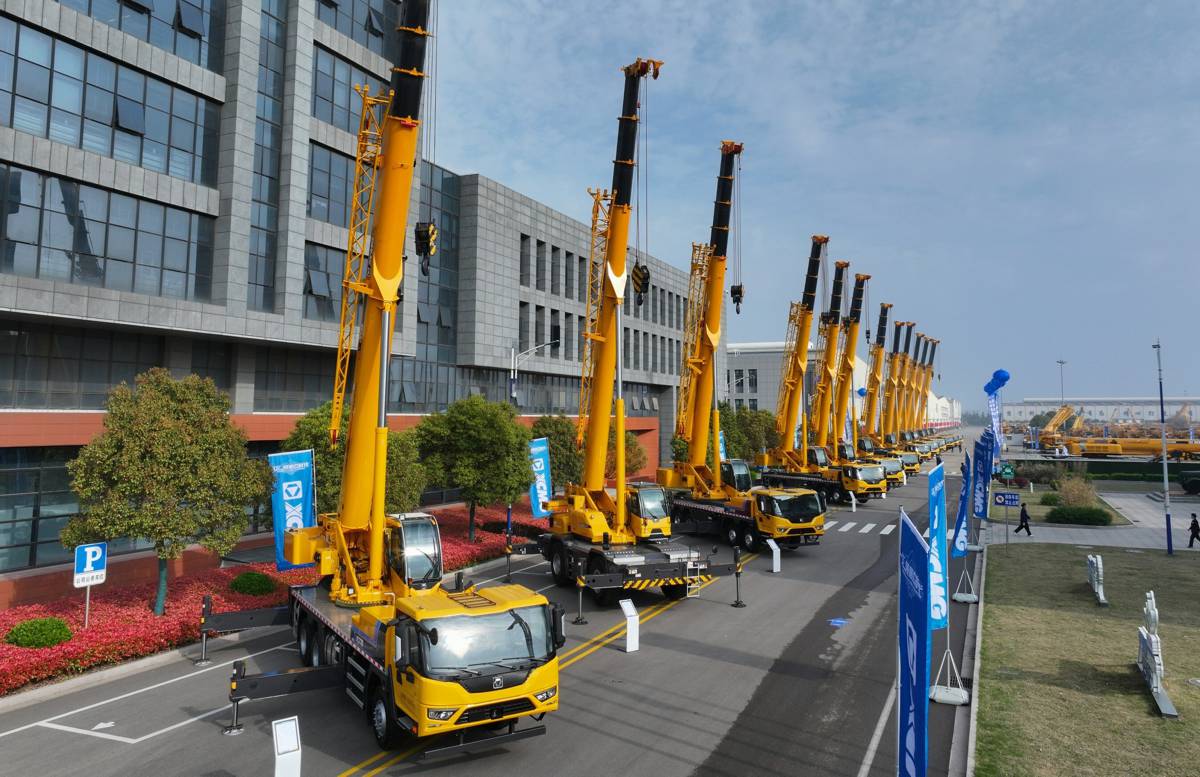2019 UK legal Construction review and 2020 preview
It’s been yet another busy year for construction, with BIM developments, greater use of modern methods of construction, looming Brexit, increased insolvencies, building safety progress, a brighter spotlight on diversity…
In this article, Simon Lewis and Michelle Essen of WBD take a look at some of the key legal changes and industry developments for the construction industry, and highlight a few things to expect in 2020.
Legal Changes
Fewer disputes
A recent study into the construction industry (the Arcadis Global Construction Disputes Report 2019: Laying the Foundation for Success) has identified a decline in the number of disputes progressing to formal dispute resolution (DR) processes by almost 50%. A drop in contentious matters may appear to be good news for the industry because it suggests the parties are getting on better. The reality, however, is that parties are simply not pursuing more formal DR mechanisms as a means to resolve their differences: instead they are adopting early dispute avoidance strategies, with participants in the study commenting that the primary method to avoid conflict was “a willingness to compromise”.
There are many practical steps that parties can take to manage the risk of a dispute on their construction projects also – including agreeing templates for notices, ensuring the contract is followed when counting days (and bank holidays), determining the process for DR and which senior parties should discuss matters and by when, and conducting regular internal review meetings to ensure all contract requirements are being followed.
Companies in liquidation and their right to adjudicate (Bresco v Lonsdale [2019] EWCA Civ 27)
In 2018 the Technology and Construction Court (TCC) held that a company in liquidation cannot refer a dispute to adjudication in circumstances where there are claims by a company in liquidation and cross claims by the other party.
However, in 2019 the case went to the Court of Appeal, which confirmed that the right to adjudicate is not automatically lost when a party goes into liquidation and there is, or there may be, a cross claim. (But any decision made in favour of a company in insolvent liquidation would not be enforced by a court meaning that no payment would (necessarily) pass from one party to another.)
The court’s decision here is particularly relevant for the construction industry at a time when insolvencies are on the increase, but bear in mind also that permission to appeal has been granted.
In addition, in the recent case of Meadowside v Hill Street [2019] EWHC 2651 (TCC) the court outlined the circumstances in which it would be prepared to allow an adjudication by an insolvent company to continue, so it seems that the potential impact of the Bresco decision is already being watered down in the light of the need to maximise recoveries by insolvent companies.
Severing part of an adjudicator’s decision (Willow v MTD Contractors [2019] EWHC 1591)
It is well-established practice that a court will ordinarily enforce an adjudicator’s decision even if the decision is wrong, provided that an adjudicator has acted in accordance with the rules of natural justice and within the adjudicator’s jurisdiction. There are a couple of exceptions to this position, such as a stay for enforcement where there are ‘special circumstances’ (such as insolvency) and where there is a short and self-contained point which is the subject of a Part 8 claim for declaratory relief.
However in 2019, in the TCC case of Willow v MTD, the court allowed severance of part of an adjudicator’s decision even though the challenge to the decision on the grounds of natural justice was unsuccessful. This was done on the basis that the part containing the flaw could be safely severed without affecting the other parts of the adjudicator’s decision.
There have been a number of recent cases where the TCC has warned parties not to issue challenges to the enforcement of an adjudicator’s decision; so the court’s indication that the TCC needs to be more willing to order severance of an adjudicator’s decision here is interesting and may influence a party’s decision on what strategy to take if it is unhappy with an adjudicator’s decision.
Industry-driven changes
Modern Methods of Construction (MMC)
MMCs have been mentioned a lot in the construction press this year.
They are often referred to in conjunction with the use of modular construction methods to build parts of a project off-site and then transport them to the desired location and assemble them together. Whilst there are other forms that MMCs can take (such as through the use of innovative materials, on-site manufacturing methods, smart lighting and heating), the industry currently seems to be focused on improving the effectiveness of modular construction as these processes are already established and delivering successful outcomes.
Given the steady rise of MMCs throughout the construction industry, there should be additional thought given to the contractual positions of and risks for the parties on any given project. For example, in the context of design, the use of off-site construction may increase the risk of a design not meeting the employer’s expectations – on a traditional build, the construction process can be closely monitored on site and halted or adjusted if it is not as expected but this is more difficult when the manufacture takes place in an off-site factory.
Grenfell and building safety progress
Following the Grenfell Tower tragedy on 14 June 2017, the government commissioned an independent review of the building regulations and fire safety to be led by Dame Judith Hackitt. On 18 December 2017 she published her interim report in which she diagnosed issues with the current building safety regulatory framework and concluded that it was “not fit for purpose”; and on 17 May 2018, she published her final report which set out 53 recommendations to the government in order to address the deficiencies in the current regulatory regime. On 18 December 2018, the government published its ‘Building a safer future – an implementation plan‘, its formal response to the recommendations in Dame Hackitt’s May 2018 final report.
On 6 June 2019, the Ministry of Housing, Communities & Local Government issued a consultation paper entitled Building a Safer Future: Proposals for Reform of the Building Safety Regulatory System. The consultation period closed at the end of July but it is very likely that we will see legislation arising from the recommendations made in the paper within the next 12 months.
On 30 October 2019, the Grenfell Tower Inquiry phase 1 report was published giving a detailed narrative account of the fire and the steps taken in response to it. This also included comments regarding issues surrounding building safety standards, cladding/deleterious materials, and testing and certification of building projects.
Insolvency
In the past five years, insolvency rates in the construction industry have increased more quickly than in other industries across the UK. Records in the 12 months to the end of September 2018 saw 2,954 construction insolvencies out of a total of 17,439 insolvencies – which represents a 12% increase on the previous year. Even large construction companies have struggled.
Reasons for construction insolvency include the delay between work being performed and payment being received, lack of profitability, and the impact of one party’s insolvency on another party (such as the effect of a main contractor’s insolvency on its subcontractor).
There are many early warning signs that an employer, contractor or subcontractor could be facing financial difficulties, like late or non-payment of supply chain invoices or employees’ wages, late filing of accounts or annual returns at Companies House, or personnel being removed from the project unexpectedly. There are also a number of ways to reduce the risk of insolvency, which parties could consider when negotiating contracts, like obtaining references and credit checks, using retention of title clauses, and including pay when paid clauses (generally these clauses are prohibited, but there is an exception in the case of “upstream insolvency”).
When a company is in insolvency, the insolvency practitioner can apply to the Court for an Order under s236 of the Insolvency Act 1986 requiring a person to provide information about the company or to attend an examination in Court. In Wallace v Wallace [2019] EWHC 2503(Ch), we learned that s236 Orders are undoubtedly helpful to insolvency practitioners but they should be used only after other avenues of enquiry have been exhausted.
Other noteworthy developments
Building Information Modelling (BIM)
This year we passed a significant milestone in relation to the ongoing development of BIM – BIM went international.
In the UK, up to January 2019, the processes underlying the use of BIM were contained in Publically Available Specifications (PASs). These covered the whole life cycle of a built asset from its concept through the delivery/building phase to the operational/FM phase and final demolition or refurbishment. The PAS dealing with the delivery phase was PAS1192-2.
However, from January 2019, PAS1192-2 was replaced by ISO19650-2, the equivalent international standard issued by the BSI. At the same time, the BSI also issued ISO19650-1, dealing with concepts and principles applicable to the whole suite of ISO standards dealing with this area. The intention is that in 2020 this suite of documents will be completed by the issue of ISO19650-3 and ISO19650-5. These will replace the existing PASs dealing with the operational phase and cyber security respectively.
In the light of the “golden thread” of building information and the need for a key data set of information to be publicly available as identified in the Hackitt Report and the Consultation Paper following the Grenfell tragedy (see above) it is likely that we will see increased attention being paid in the forthcoming year to Asset Information Models and how they can be used in the context of building safety requirements.
Digital Twins
The pace of change in construction is increasing each year. In 2019, we saw more discussion about digital twin.
Atkins and the Institute of Engineering and Technology produced a report in October 2019 called “Digital twins for the built environment – An introduction to the opportunities, benefits, challenges and risks”. In it, it said “The Gemini Principles define a digital twin as “a realistic digital representation of assets, processes or systems in the built or natural environment”. Many people see it as a simple digital replica of a real thing – a ‘twin’, but “what distinguishes a digital twin from any other digital model or replica is its connection to its physical twin”, with ‘connection’ meaning there is some type of relationship and association between the physical and digital. Therein lies the complexity of this industry-agnostic concept.”
This is also something that major businesses are increasingly interested in, as became apparent when we spoke to them at our Annual Construction Law Conference in November 2019.
LGBT+
LGBT+ and diversity have been high on many businesses’ radars throughout 2019, as public awareness and discussion around this has grown.
In a survey conducted by Construction News in 2017, 28% of LGBTQ+ respondents had experienced offensive or inappropriate comments about their gender or sexuality at work and 59% of people had heard “gay” being used as an insult in the workplace. Furthermore, 54% of LGBTQ+ respondents said that they didn’t feel comfortable about being open about their gender or sexuality on site.
The construction industry has made progress towards a more inclusive and equal industry but homophobia/transphobia is still an issue within the sector. This, coupled with the perception of the industry being male-dominated, can be a barrier to the inclusion of the LGBTQ+ community. But there is a lot that businesses can do to help tackle this issue and many reasons why they should (including tackling the skills shortage, promoting better mental health, and improving productivity and staff retention).
Contracts and other industry publications
2019 brought us a range of new and updated contracts and publications:
- FIDIC published its new tunnelling contract, the “Conditions of Contract for Underground Works”, which it also refers to as the “Emerald book”
- RIC’s new consultant appointment forms (which they ran a consultation on in 2018) were published, including a standard form and short form of appointment, plus a number of different services options such as for expert witnesses, building surveyors, and dilapidations
- NEC published amendments to its NEC4 June 2017 suite, following industry feedback
- The Incoterms, which relate to key terms of trade for the sale of goods, were updated by the International Chamber of Commerce.
What to look out for in 2020
Brexit and General Election
Brexit uncertainty continued for the industry (and the UK) throughout the 2019, with several dates for Brexit having been extended, and with the General Election on 12 December 2019.
The General Election 2019 manifestos contained a number of statements and promises which were relevant to the construction industry, including around:
- Construction and tax
- Apprenticeships and the skills shortage
- BAME / Black, Asian and Minority Ethnic-related matters
- Modern Methods of Construction
We looked at these, including from a Scottish point of view.
With the Conservatives winning the general election, these changes that they highlighted in their manifesto will be something to keep an eye out for.
With particular regard to Brexit, our Brexit hub can help you keep informed as will our Brexit timeline. You may also want to see what else was said by the Conservative party (and other parties) on our Election Insights page.
VAT Reverse Charge
The VAT Reverse Charge was due to come into force on 1 October 2019 – but on 6 September 2019, it was postponed and will now come into force on 1 October 2020.
Despite this, developers and construction companies still need to know about and prepare for VAT Reverse Charge now, because when it comes into force it will apply to construction contracts which are operational on 1 October 2020 (not just new contracts entered into from that date).
For a high-level and simplified explanation of the changes, to help you understand the basics and consider how the changes may affect you, see here. And for what the Conservatives said about construction and tax in their 2019 election manifesto, see here.
BIM
As mentioned above, keep an eye out for ISO19650-3 and ISO19650-5 in 2020. In addition, the new ISO compliant Information Protocol should be available by the end of 2019.
Grenfell and building safety progress
The Grenfell Tower Inquiry phase 1 report 2019 was published with an Executive Summary which said “the principal focus of Phase 2 will be on the decisions which led to the installation of a highly combustible cladding system on a high-rise residential building and the wider background against which they were taken”. It is not clear when what the schedule is for Phase 2 yet, but its hearings are due to start in early 2020.
For more information on construction developments, see our interactive construction and engineering timeline.















